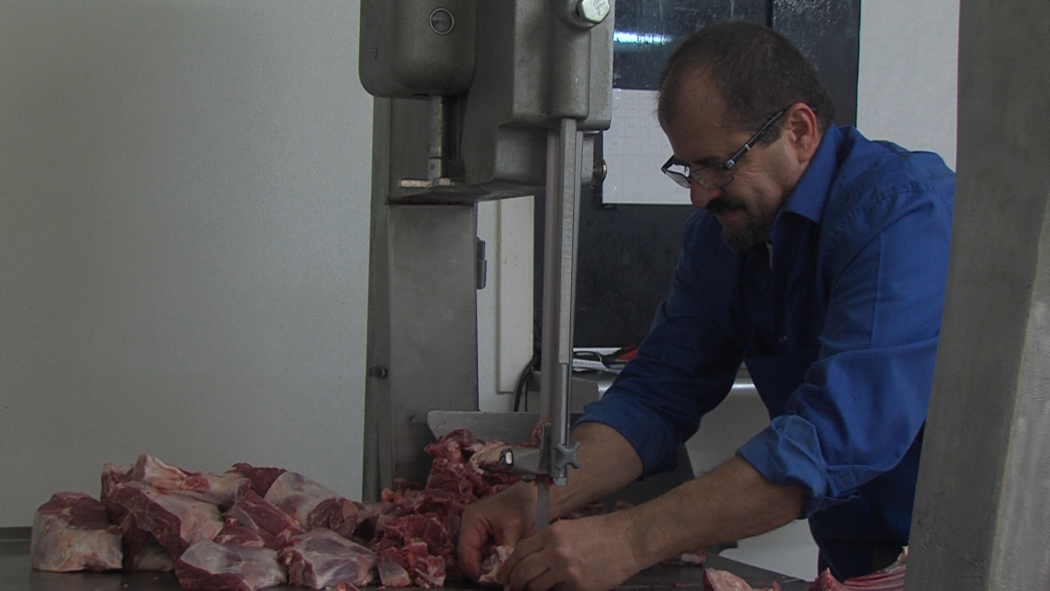Cache Valley Muslims travel to Salt Lake City to get Halal meat
When Adam Alrowaiti wants meat he drives more than 80 miles to get it. This is because Alrowaiti is Muslim and the closest place for him, or any other Muslim in Cache Valley, to get Halal meat is in Salt Lake City.
There are no Halal butchers in Logan and the closest alternative for Cache Valley Muslims is buying a live animal and slaughtering it themselves, which isn’t necessarily an appealing or realistic task for an average person.
Alrowaiti is the Islamic Center Committee President and a second year graduate student at USU. He and other Muslims tried to order the meat from websites, but they would not deliver it to Logan.
“Nowadays the only option for me is to go to Salt Lake City to get it from Halal Markets,” Alrowaiti said.
As a result, many Muslims will plan ahead and send a few people to markets in Salt Lake to get meat for groups.
“We do on a regular basis have quite a few students and customers coming from Logan,” said Abed Abou, who manages the Shahrazad Market in Salt Lake, a market which is popular for Logan Muslims. “They stock up every week and they come out. And sometimes one will come shop for three or four people.”
Abou said that it’s not just Cache Valley. He has people coming from places in Idaho, Wyoming and Montana just to get Halal meat.
Halal meat is slaughtered and prepared in accordance to Islamic guidelines. The guidelines are broad, but among other things in order for meat to be considered Halal it must be a healthy animal, slaughtered with a sharp knife so it endures minimal suffering, the phrase “Bismillah” — which translates to “In the name of Allah” — must be said while it is being killed and it must be facing Mecca during the killing. Then the blood must be drained from the animal before it is butchered. Halal meat also sets guidelines for which animals can be eaten. For example, pork is not permitted under Halal guidelines and in contrast, fish is always allowed.
“Living in a small town city in America, it’s hard to access all of that,” said Yusuf Mumin, a Muslim student at USU.
Mumin, who grew up in Salt Lake, said he used to get it when he would go home to see his family. However, he doesn’t get to do that as much anymore with work and school so he has had to make compromises.
“Eating out and preparing halal food isn’t as difficult if you’ve kind of grown up in the culture,” Mumim said. “Had I moved from the Middle East or a predominantly Islamic country and moved to the U.S. it would be a struggle. But I grew up in Utah so it’s always been a struggle since day one.”
Mumin will stick to mostly vegetarian food and will eat some chicken that is approved for mass consumption. He still does not eat certain foods, such as pork. But some lines are considered okay to bend if circumstance makes it too difficult to follow Halal guidelines.
“If we run out of every option, every single option, it is not forbidden for us to eat meat from a regular grocery store,” Alrowaiti said. “Many people think of Islam as a very strict religion with very strict teachings and strict rules so Islam is in contrary a very flexible religion.”
Being conscious of the guidelines is the most important part of them.
“It all depends on your intentions when it comes to eating Halal food,” Mumim said. “If you order a pepperoni sandwich knowing that there is pork in it and you eat it then that is more sinful than you accidentally eating a slice of pizza with pepperoni on it.”
Halal meat is not commonplace in the U.S., especially not in smaller cities. So people who do want to follow Halal guidelines face the challenge of dining between the mainstream options.
“It is kind of frustrating, but it has also taught me self-restraint and adjusting my diet,” Mumin said. “It’s more frustrating for social aspects, being a 23-year-old and trying to go out and eat with friends and trying to make sure you stay within your dietary restrictions.”
—dahdahjm@gmail.com
twitter: @dahdahjeff

